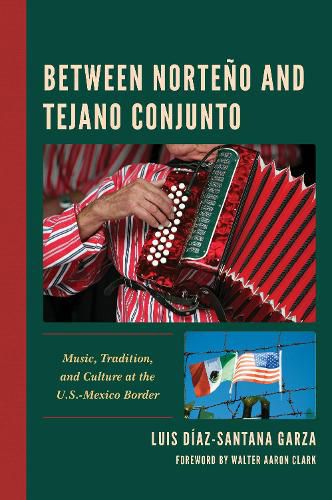Readings Newsletter
Become a Readings Member to make your shopping experience even easier.
Sign in or sign up for free!
You’re not far away from qualifying for FREE standard shipping within Australia
You’ve qualified for FREE standard shipping within Australia
The cart is loading…






Between Norteno and Tejano Conjunto:Music, Tradition and Culture at the U.S.-Mexico Border analyzes the origin, evolution, and dissemination of norteno and tejano conjunto. These musical forms represent a marginalized local identity in parts of Mexico and the American Southwest that evolved into an acclaimed form of U.S.-Mexico border identity, later becoming an international mainstream genre. This book provides a long-term historic vision of conjunto and its various musical forms such as the polka, the corrido or cancion, the bolero, and the cumbia. It also analyzes its transformations and contributions to other musical cultures in terms of how it articulates meanings, organizes our sense of time and memory, and contributes to the social construction of individual identities on the border. Despite not having been spread directly by either of the two nation-states where it proliferated, the regional-transnational music of accordion and bajo sexto has been one of the leading symbols of Mexican and Chicano identity since the mid-twentieth century.
$9.00 standard shipping within Australia
FREE standard shipping within Australia for orders over $100.00
Express & International shipping calculated at checkout
Between Norteno and Tejano Conjunto:Music, Tradition and Culture at the U.S.-Mexico Border analyzes the origin, evolution, and dissemination of norteno and tejano conjunto. These musical forms represent a marginalized local identity in parts of Mexico and the American Southwest that evolved into an acclaimed form of U.S.-Mexico border identity, later becoming an international mainstream genre. This book provides a long-term historic vision of conjunto and its various musical forms such as the polka, the corrido or cancion, the bolero, and the cumbia. It also analyzes its transformations and contributions to other musical cultures in terms of how it articulates meanings, organizes our sense of time and memory, and contributes to the social construction of individual identities on the border. Despite not having been spread directly by either of the two nation-states where it proliferated, the regional-transnational music of accordion and bajo sexto has been one of the leading symbols of Mexican and Chicano identity since the mid-twentieth century.